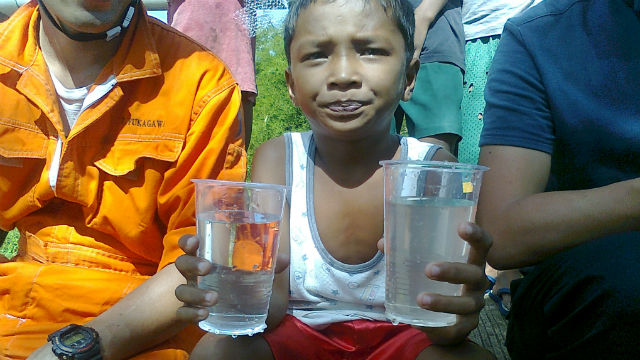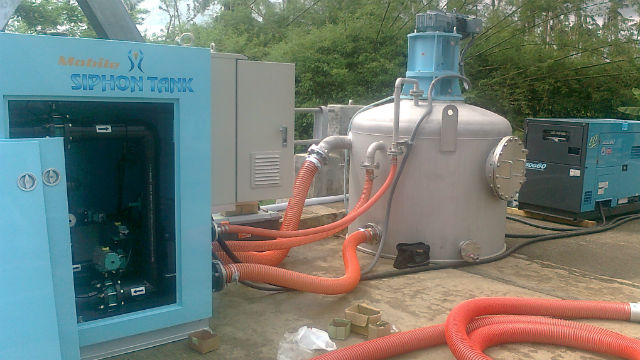SUMMARY
This is AI generated summarization, which may have errors. For context, always refer to the full article.

MANILA, Philippines – Sourcing clean and potable water remains a major challenge for communities affected by Typhoon Yolanda (Haiyan). This is aside from the severe infrastructure damage and lack of power in remote areas.
To help address this problem, the Japan International Cooperation Agency (JICA) has provided a water filtration and purification system to help typhoon-ravaged communities.
The Japanese agency has installed a mobile siphon tank to purify water in Daanbantayan, Cebu, where a lot of the existing water supply systems were damaged by Yolanda. The technology can filter sand and gravel, and treat water to make it potable. Since it is very compact, it can easily be loaded on a truck and moved around to different communities in need.
The siphon tank is expected to serve some 1,400 households in the municipality.
Daanbantayan Mayor Augusto Corro said the technology will greatly help the affected barangays especially since the lack of electricity had worsened the water supply situation.
“It will take some time to recover our water supply systems because most systems are heavily dependent on deep groundwater that needs electricity to be pumped up. But electricity has not yet been fully recovered in Daanbantayan especially since it is away from the backbone network,” Corro said.

Shared technology
The technology was developed by Nihon Genryo, a Japanese small and medium enterprise (SME) firm. It is part of JICA’s ‘Pilot Survey for Disseminating SME Technologies’ program that helps solve different problems in developing countries.
JICA Philippines chief representative Takahiro Sasaki said the water filtration technology will not only help typhoon-damaged areas but will also help improve water supply problems in other parts of the country.
“With help from the local government, we are building on JICA’s past technical assistance to address water security and safety challenges in various areas,” Sasaki added.
Following the end of relief operations in Daanbantayan, the technology will be utilized by the Metropolitan Cebu Water District (MCWD) to expand its water coverage in Metro Cebu by 2020. Fast population growth and the lack of water infrastructures have affected economic development in Metro Cebu, the second largest urban area in the country with 7 cities and 6 municipalities.
JICA, an agency responsible for implementing the technical cooperation, grant aid and yen loan programs of the Japanese Government’s Official Development Assistance (ODA) to developing countries, had already provided emergency relief assistance to remote typhoon-ravaged areas, deployed young Japanese volunteers to help in rebuilding industries and restoring survivors’ lives to normal, and dispatched medical personnel and disaster resiliency experts in light of the super typhoon.
Sasaki added that JICA will continue to explore ways to help improve water security and safety in typhoon-damaged areas.
Among other technologies that JICA had shared in the past were solar technology used to boost milkfish production in the Philippines, and an IT-based agriculture production database and distribution system that helps farmers recover post-harvest losses. – Rappler.com
Information for this article was provided by the Japan International Cooperation Agency.
Add a comment
How does this make you feel?
There are no comments yet. Add your comment to start the conversation.